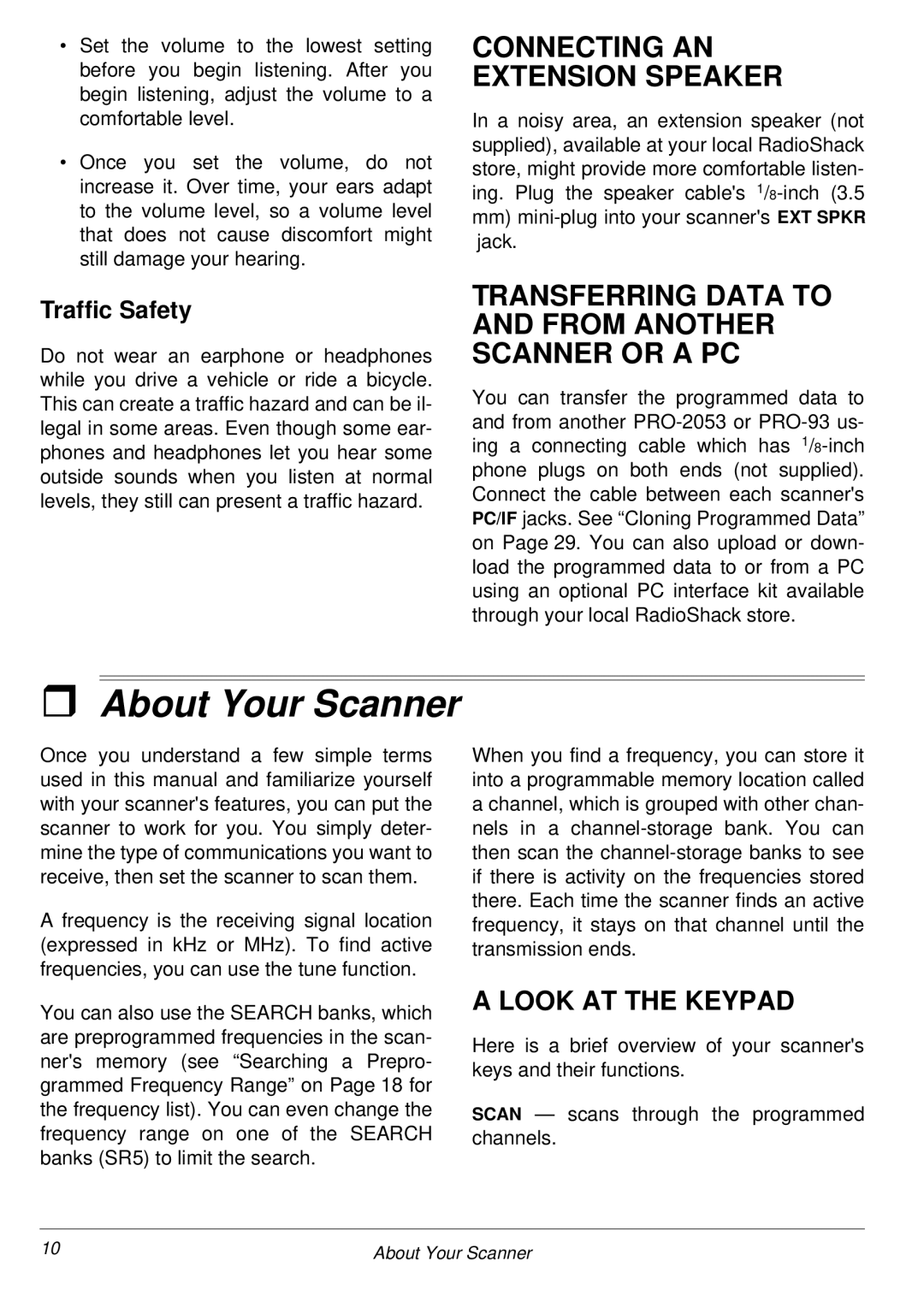
•Set the volume to the lowest setting before you begin listening. After you begin listening, adjust the volume to a comfortable level.
•Once you set the volume, do not increase it. Over time, your ears adapt to the volume level, so a volume level that does not cause discomfort might still damage your hearing.
Traffic Safety
Do not wear an earphone or headphones while you drive a vehicle or ride a bicycle. This can create a traffic hazard and can be il- legal in some areas. Even though some ear- phones and headphones let you hear some outside sounds when you listen at normal levels, they still can present a traffic hazard.
CONNECTING AN EXTENSION SPEAKER
In a noisy area, an extension speaker (not supplied), available at your local RadioShack store, might provide more comfortable listen- ing. Plug the speaker cable's
mm)
jack.
TRANSFERRING DATA TO AND FROM ANOTHER SCANNER OR A PC
You can transfer the programmed data to and from another
ˆAbout Your Scanner
Once you understand a few simple terms used in this manual and familiarize yourself with your scanner's features, you can put the scanner to work for you. You simply deter- mine the type of communications you want to receive, then set the scanner to scan them.
A frequency is the receiving signal location (expressed in kHz or MHz). To find active frequencies, you can use the tune function.
You can also use the SEARCH banks, which are preprogrammed frequencies in the scan- ner's memory (see “Searching a Prepro- grammed Frequency Range” on Page 18 for the frequency list). You can even change the frequency range on one of the SEARCH banks (SR5) to limit the search.
When you find a frequency, you can store it into a programmable memory location called a channel, which is grouped with other chan- nels in a
A LOOK AT THE KEYPAD
Here is a brief overview of your scanner's keys and their functions.
SCAN — scans through the programmed channels.
10 | About Your Scanner |
